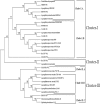Potential of fungi isolated from the dumping sites mangrove rhizosphere soil to degrade polythene
- PMID: 30926843
- PMCID: PMC6440974
- DOI: 10.1038/s41598-019-41448-y
Potential of fungi isolated from the dumping sites mangrove rhizosphere soil to degrade polythene
Abstract
Polythene is the most widely used plastic around the globe. Among the total plastic waste generated, polythene contributes the maximum share (64%). Various strategies/methods are being utilized to deal with the increasing rate of plastic waste, but among all the methods, bioremediation is regarded as the ecofriendly and widely accepted method. In the current investigation, we have attempted to discover the elite polythene deteriorating fungi (isolated from the rhizosphere soil of Avicennia marina). From 12 different eco-geographical locations along the West Coast of India, total 109 fungal isolates were recorded. The polythene deteriorating fungi were screened at varied pH (3.5, 7 and 9.5) based on changes in weight and tensile strength of the treated polythene at ambient temperature with continuous shaking for 60 days. BAYF5 isolate (pH 7) results in maximum reduction in weight (58.51 ± 8.14) whereas PNPF15 (pH 3.5) recorded highest reduction in tensile strength (94.44 ± 2.40). Surprisingly, we have also reported weight gain, with highest percent weight gain (28.41 ± 6.99) with MANGF13 at pH 9.5. To test the reproducibility of the results, the elite polythene degrading fungal isolates based on weight loss and reduction in tensile strength were only used for repetition experiment and the results based on the reduction in tensile strength were found only reproducible. Polythene biodegradation was further confirmed using Scanning Electron Microscopy (SEM) and Fourier Transform Infrared Spectroscopy (FTIR) analysis. The most efficient polythene deteriorating fungal isolates were identified as Aspergillus terreus strain MANGF1/WL and Aspergillus sydowii strain PNPF15/TS using both morphological keys and molecular tools.
Conflict of interest statement
The authors declare no competing interests.
Figures




References
-
- Seymour RB. Polymer science before and after 1899: notable developments during the lifetime of Maurits Dekker. Journal of Macromolecular Science-Chemistry. 1989;26:1023–1032.
-
- Shimao M. Biodegradation of plastics. Current Opinion in Biotechnology. 2001;12:242–247. - PubMed
-
- Shah AA, Hasan F, Hameed A, Ahmed S. Biological degradation of plastics: a comprehensive review. Biotechnology Advances. 2008;26:246–265. - PubMed
-
- Kathiresan K. Polythene and plastics-degrading microbes from the mangrove soil. Revista de Biologia Tropical. 2003;51:629–633. - PubMed
-
- Ali MI, et al. Isolation and molecular characterization of polyvinyl chloride (PVC) plastic degrading fungal isolates. Journal of Basic Microbiology. 2014;54:18–27. - PubMed
Publication types
MeSH terms
Substances
LinkOut - more resources
Full Text Sources
Other Literature Sources
Medical

